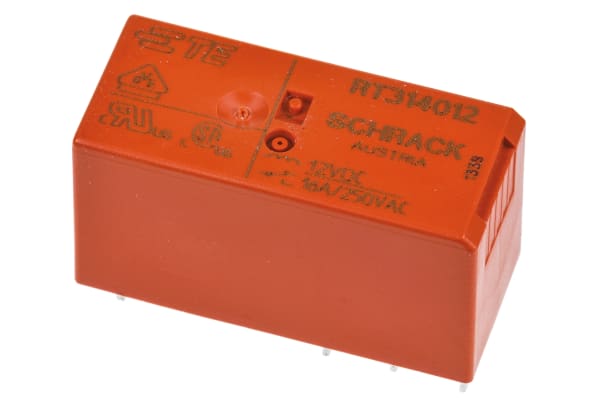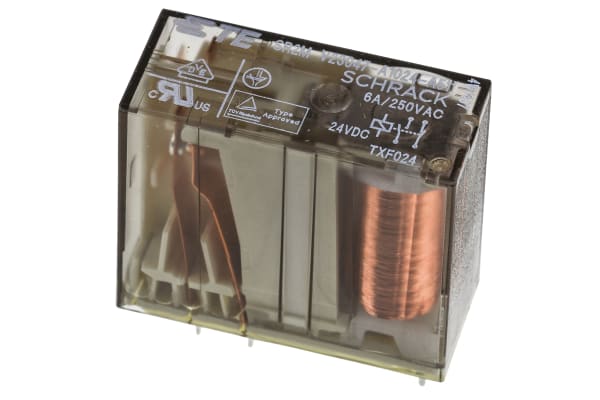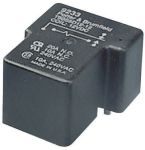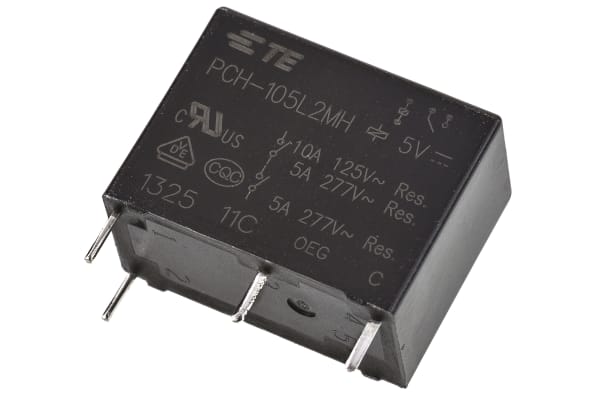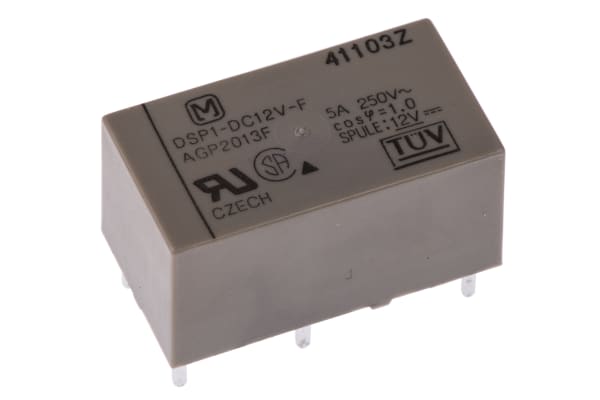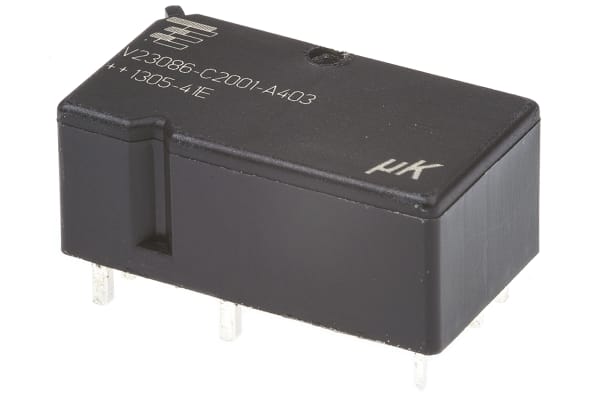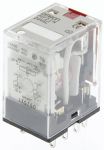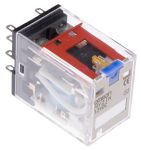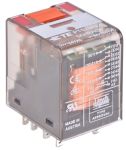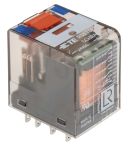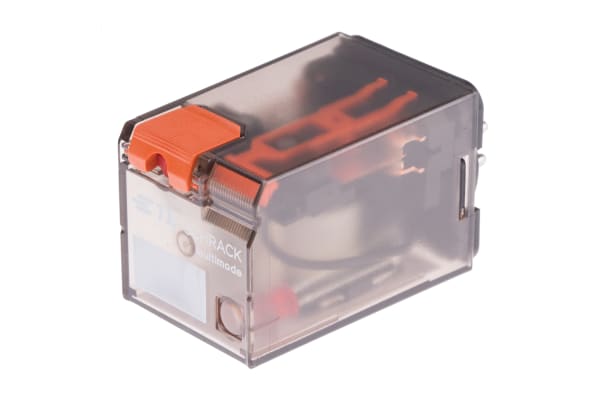Non-Latching Relays
Relays are electrical switches that are operated by electrical impulses with the primary function to open and close a circuit, they can also be referred to as industrial switches. There are 2 main types available, latching and non–latching relays.How do non-latching relays work?Non-latching relays are in a normally closed (NC) position and will stay in this state without power. When power passes through the circuit, the relay switched to a normally open (NO) position by using an internal coil to generate a magnetic force, holding this NO position. Once the current is turned off, it returns to the NC position. This makes non-latching relays well suited to push-button applications like keyboards and micro-controller input buttons.What are non-latching relays used for?Non-latching relays are highly durable and versatile components, making their performance long lasting and suitable for use in a wide range of applications, such as:Automotive enginesHousehold appliancesIndustrial machineryMedical equipmentTelecommunications equipmentWhat is the difference between latching and non-latching relays?Both types of relays in similar in design and function, however, a significant difference between them is that a latching relay will remain in the last position it when it was last powered, whereas a non-latching goes back to its normal position. This makes each more type of relay suitable for different applications. Considerations when selecting a relayWhen choosing a relay, it is important to consider a number of specifications to ensure it is fit for purpose, some factors include:Coil voltage – the required voltage to actuate the switching mechanism. If a voltage is too high this could damage the components, if it is too low then it will not actuate. Contact configuration – This is the state the contacts are in without power. For example SPST, single pole single throw.Contact material – the relay contacts are available in many materials that have certain properties. Common materials are gold, silver, tin oxide and nickel Coil power – the amount of power (watts) the coil operates at. This must match the power in the circuit for correct function. Coil resistance – the amount of resistance (ohms) in the circuit that the coil creates.
-
TE Connectivity, 12V dc Coil Non-Latching Relay SPDT, 16A Switching Current PCB Mount Single Pole, RT314012 9-1393239-5
IDR52,759.67 -
TE Connectivity, 24V ac Coil Non-Latching Relay SPDT, 12A Switching Current PCB Mount Single Pole, RT114524
IDR67,024.71 -
TE Connectivity, 12V dc Coil Non-Latching Relay SPNO, 5A Switching Current PCB Mount Single Pole, PCJ-112D3M-WG,000M
IDR38,075.07 -
TE Connectivity, 24V dc Coil Non-Latching Relay SP-NO/NC, 6A Switching Current PCB Mount Single Pole, V23047-A1024-A511
IDR206,213.74 -
TE Connectivity, 24V dc Coil Non-Latching Relay SPNO, 8A Switching Current PCB Mount Single Pole, OJ-SS-124LMH2,005
IDR27,061.62 -
TE Connectivity, 48V dc Coil Non-Latching Relay SPNO, 30A Switching Current PCB Mount Single Pole, T9AS1D12-48=T9A
IDR75,940.36 -
TE Connectivity, 24V dc Coil Non-Latching Relay SPDT, 30A Switching Current PCB Mount Single Pole,
IDR120,308.83 -
TE Connectivity, 5V dc Coil Non-Latching Relay SPNO, 5A Switching Current PCB Mount Single Pole, PCH-105L2MH,000
IDR39,858.20 -
Phoenix Contact, 24V dc Coil Non-Latching Relay 5PNO, DPST, 2963747
IDR2,597,495.96 -
Panasonic DPST Non-Latching Relay PCB Mount, 12V dc Coil, 5 A
IDR95,240.12 -
TE Connectivity, 12V dc Coil Automotive Relay DPDT, 25A Switching Current PCB Mount, 2 Pole, V23086C2001A403 1413009-9
IDR153,349.18 -
TE Connectivity, 12V dc Coil Automotive Relay SPDT, 25A Switching Current PCB Mount Single Pole, V23086C1001A403
IDR36,606.61 -
TE Connectivity, 12V dc Coil Non-Latching Relay DPDT, 2A Switching Current PCB Mount, 2 Pole, MT2-C93402
IDR73,527.89 -
TE Connectivity, 5V dc Coil Non-Latching Relay DPDT, 2A Switching Current PCB Mount, 2 Pole, MT2-C93401
IDR71,849.65 -
RS PRO, 240V ac Coil Non-Latching Relay 4PDT, 12A Switching Current Plug In, 4 Pole
IDR247,435.51 -
Omron, 24V ac Coil Non-Latching Relay DPDT, 10A Switching Current Plug In, 2 Pole, MY2IN 24AC (S)
IDR213,136.48 -
Omron, 24V dc Coil Non-Latching Relay DPDT, 10A Switching Current Plug In, 2 Pole, MY2IN 24DC (S)
IDR155,761.65 -
Omron, 12V dc Coil Non-Latching Relay DPDT, 10A Switching Current Plug In, 2 Pole, MY2IN 12DC(S)
IDR149,678.03 -
TE Connectivity, 24V dc Coil Automotive Relay SPNO, 25A Switching Current Panel Mount Single Pole, V23134J1053D642
IDR157,544.78 -
TE Connectivity, 24V dc Coil Automotive Relay SPDT, 30A Switching Current Plug In Single Pole, V23074A1002A403
IDR56,325.93 -
TE Connectivity, 24V ac Coil Non-Latching Relay 4PDT, 6A Switching Current PCB Mount, 4 Pole, PT570R24 7-1415001-1
IDR176,739.65 -
TE Connectivity, 24V dc Coil Non-Latching Relay 4PDT, 6A Switching Current PCB Mount, 4 Pole, PT570L24 6-1415001-1
IDR128,804.92 -
TE Connectivity, 230V ac Coil Non-Latching Relay DPDT, 10A Switching Current Plug In, 2 Pole, MT228230 7-1393090-1
IDR362,185.17 -
TE Connectivity, 115V ac Coil Non-Latching Relay 4PDT, 6A Switching Current DIN Rail, 4 Pole, PT5S7SB5 1415366-1
IDR459,627.98



